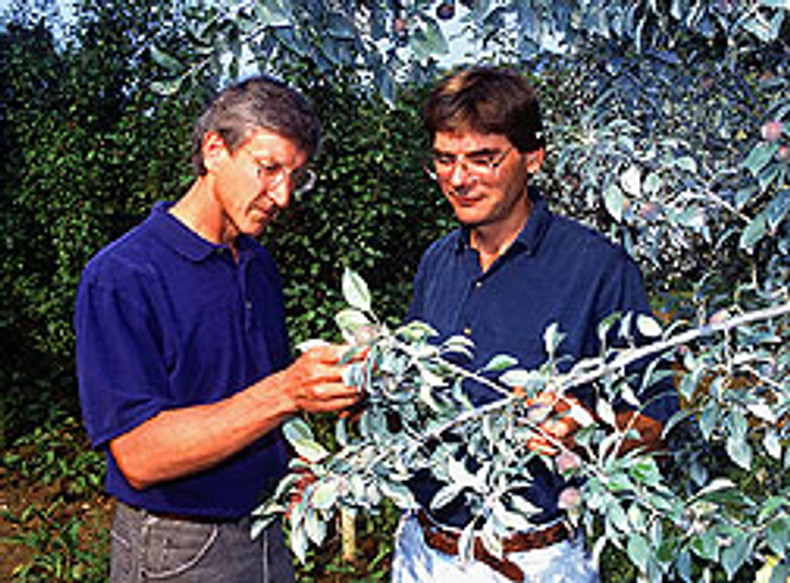Structure-function relationships affecting the insecticidal and miticidal activity of sugar esters
Gary J Puterka, Anthony BarringtonAffiliations expand
- PMID: 12852599
- DOI: 10.1603/0022-0493-96.3.636
Abstract
Synthetic sugar esters are a relatively new class of insecticidal compounds that are produced by reacting sugars with fatty acids. The objective of this research was to determine how systematic alterations in sugar or fatty acid components of sugar ester compounds influenced their insecticidal properties. Sucrose octanoate, sorbitol octanoate, sorbitol decanoate, sorbitol caproate, xylitol octanoate, xylitol decanoate and xylitol dodecanoate were synthesized and evaluated against a range of arthropod pests. Dosage-mortality studies were conducted on pear psylla (Cacopsylla pyricola Foerster) on pear, tobacco aphid (Myzus nicotianae) Blackman and tobacco hornworm (Manduca sexta [Johannson]) on tobacco, and twospotted spider mite (Tetranychus urticae Koch) on apple in laboratory bioassays. These sugar esters were compared with insecticidal soap (M-Pede, Dow AgroSciences L.L.C., San Diego, CA), to determine how toxicologically similar these materials were against the arthropod pests. Substitutions in either the sugar or fatty acid component led to significant changes in the physical properties and insecticidal activity of these compounds. The sugar esters varied in their solubility in water and in emulsion stability, yet, droplet spread upon pear leaves occurred at low concentrations of 80-160 ppm and was strongly correlated with psylla mortalities (R2 = 0.73). Sequentially altering the sugar or fatty acid components from lower to higher numbers of carbon chains, or whether the sugar was a monosaccharide or disaccharide did not follow a predictable relationship to insecticidal activity. Intuitively, changing the hydrophile from sorbitol (C6) to xylitol (C5) would require a decrease in lipophile chain length to maintain hydrophilic-lipophilic balance (HLB) relationships, yet an increase in lipophile chain length was unexpectedly needed for increasing insecticidal activity. Thus, the HLB of these materials did not correlate with pear psylla mortalities. Initial insect bioassays and dosage-mortality data found significant differences among sugar ester compounds' toxicity to the range of arthropod species. Sucrose octanoate high in monoester content had the highest activity against the range of arthropod pests at low concentrations of 1200-2400 ppm. No single chemical structure for the xylitol or sorbitol esters were optimally effective against the range of arthropods we tested and sorbitol octanoate and xylitol decanoate had the highest insecticidal activity of this group. All of the sugar ester materials produced high T. urticae mortalities on apple at very low concentrations of 400 ppm. Overall, most of the sugar esters that were examined had superior insecticidal activity compared with insecticidal soap. Sugar ester chemistry offers a unique opportunity to design an insecticide or miticide specific to certain arthropod pests which would be valuable in crop-integrated pest management (IPM) programs. Sucrose esters are currently used as additives in the food industry which makes them especially attractive as safe and effective insecticides.

